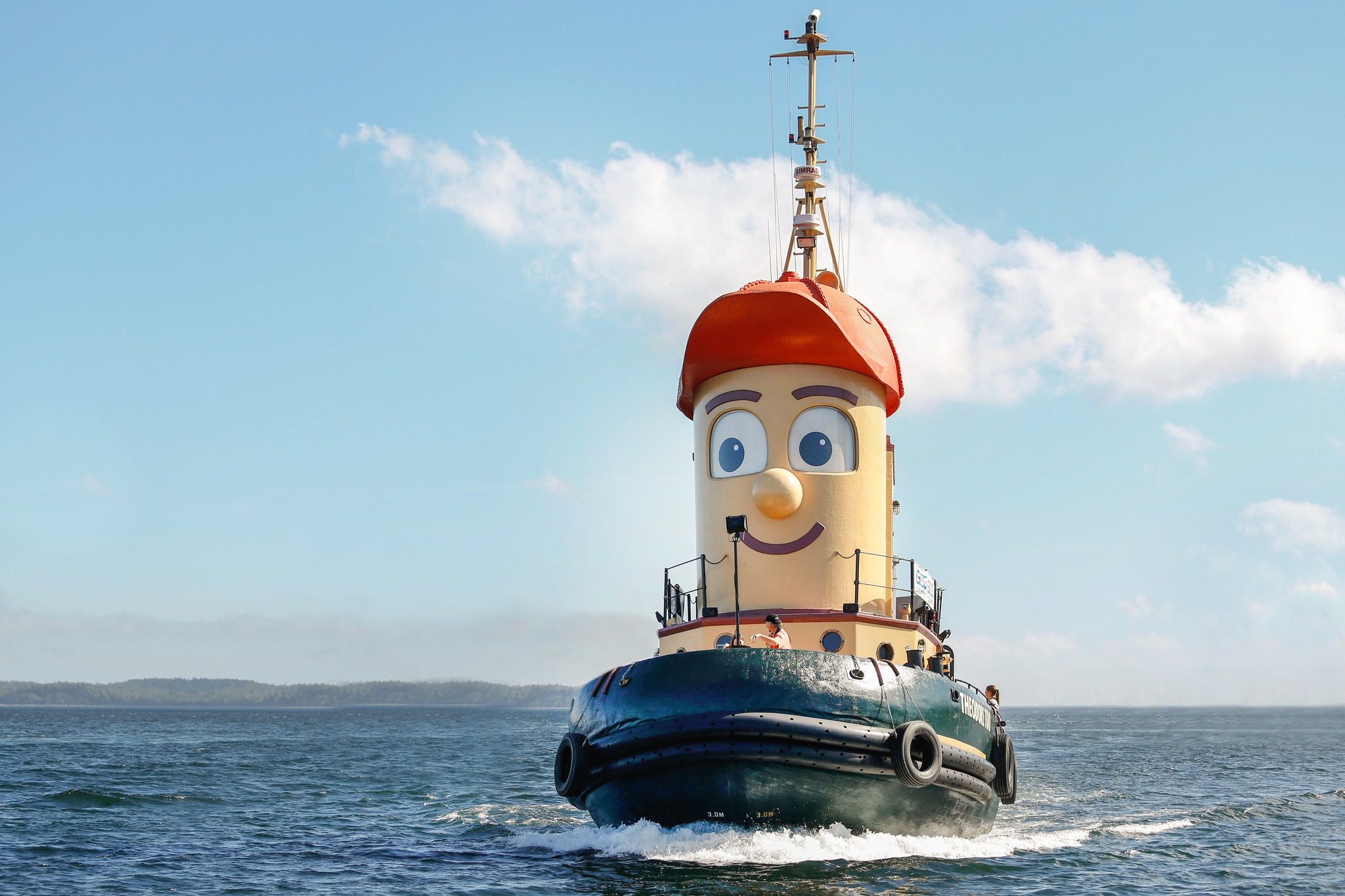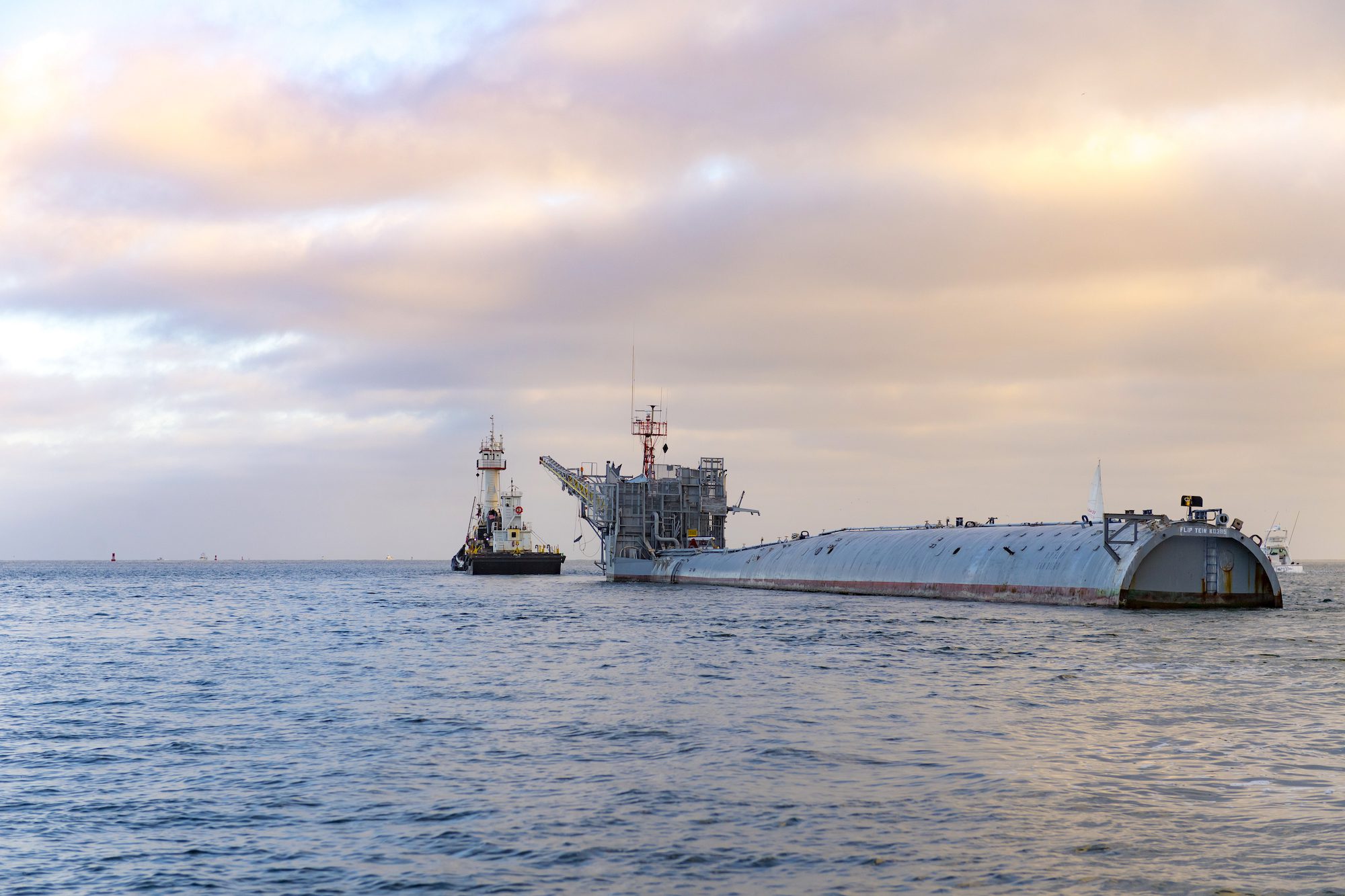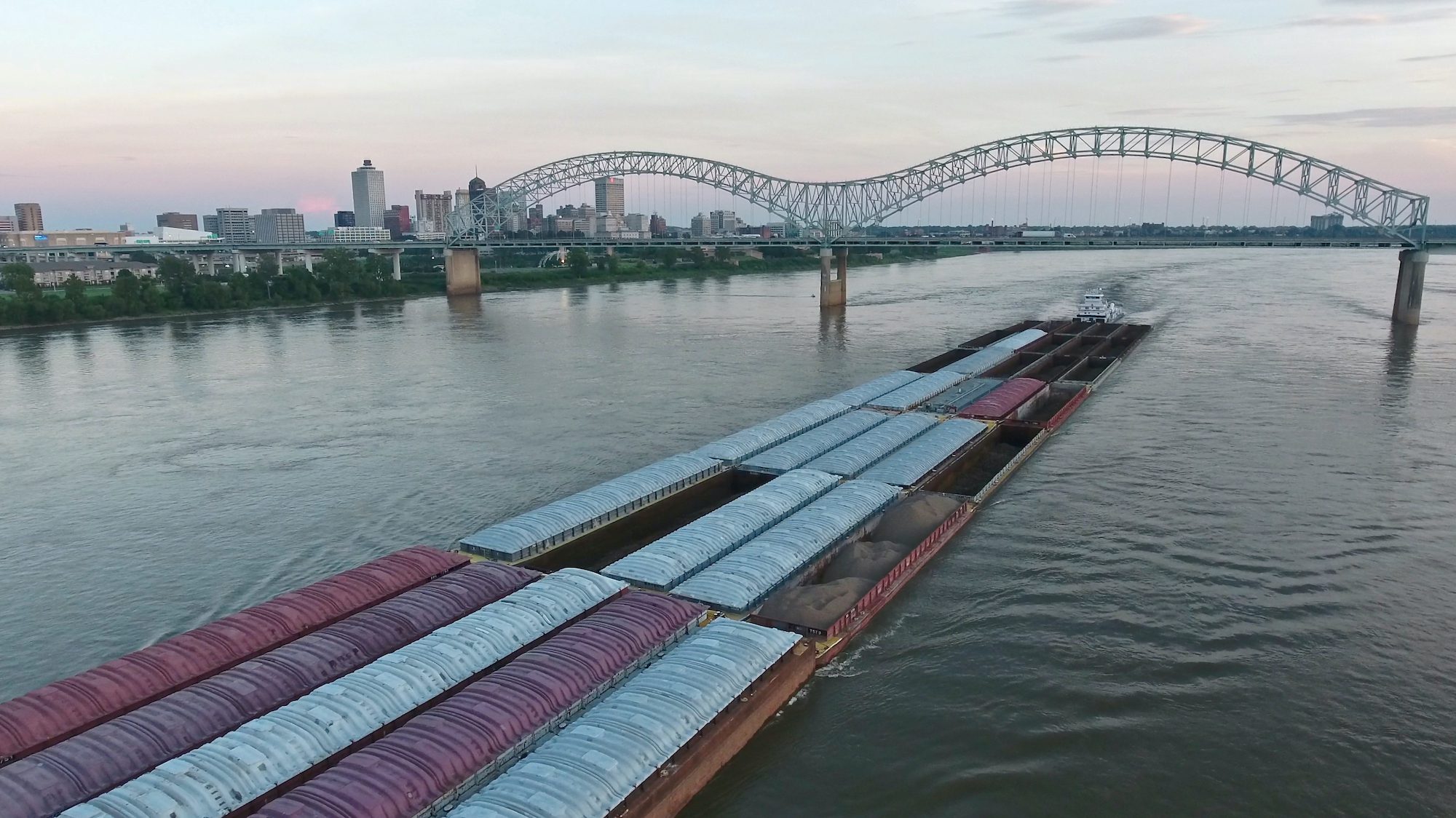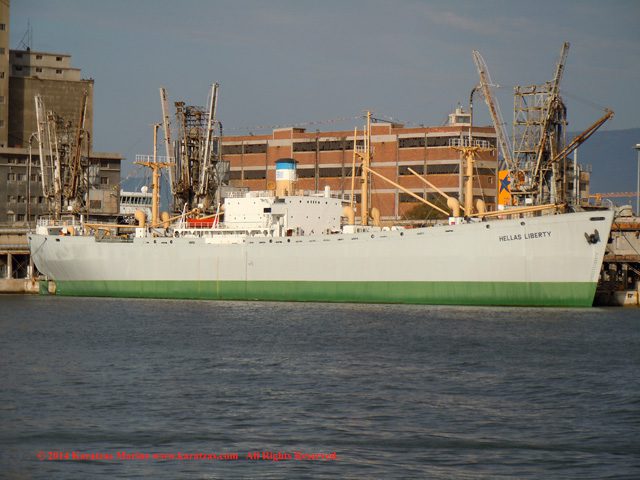
We often tend to pay special honors, and rightly so, to the crucial battles that took place at decisive moments and changed the course of a war or possibly history, and we often tend to put special emphasis on the bigger than life generals and admirals who were the protagonists and their landmark battlefields and flagships, while the ‘smaller’ efforts and ingenuity to make the battleships and flagships victorious are often referred to the little known minutia of great story telling and away from the attention of the headlines. While we were celebrating ‘D Day’ recently and the landing of the Allied forces at the beaches of Normandy, and while in Greece attending Posidonia, we had the serendipitous opportunity to attend a special event and visit a ship that perfectly fits the concept of the ‘unsung hero’.
During World War II, Nazi U-boats sank in the Atlantic about 3,000 Allied ships, about 2,800 of which were merchant ships; assuming that WWII lasted six years, the rate of casualties were almost one ship per diem in the Battle of the Atlantic. With the US as the only Allied power with its infrastructure intact, there had to be a quick way to move troops, ammunition, provisions, equipment, etc across the Atlantic and to the battlefields, in a sort of a floating pipeline, despite the efforts and successes of the Nazi U-boats to keep supplies short. The answer to a seaway ‘conveyor’ was to keep building cheap ships fast; actually keep building them faster than the Nazis could sink them.
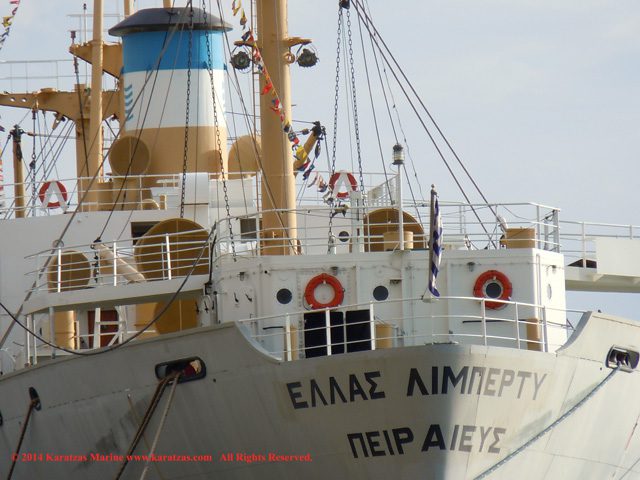
Cargo ships that were built during WWII under the directive to supply the Allied forces eventually came to be known as ‘Liberty Ships’. At a nominal cost of $2 mil (about $34 mil today), 2,710 such vessels were built in eighteen shipyards in the US. The original design was based on British vessel designs developed in the late 19th century; however, adapting the design in the US, several modifications were adopted in order to make the vessels slightly larger, but more importantly, cheaper and easier to build.
Riveting in the original design gave place to welding, thus providing one-third savings in labor costs. Two oil-fired boilers were installed and the engine was a simple triple expansion steam engine of 2,500 hp output that could propel the 10,000 dwt vessel at 11 knots (steam turbines engines were known at the time, but they more complicated to build as more precise, and such building capacity was reserved for navy ships). These US-modified ships were designated as ‘EC2-S-C1’: ‘EC’ for Emergency Cargo, ‘2’ for a ship between 400 and 450 feet (120 and 140 m) long (Load Waterline Length), ‘S’ for steam engines, and ‘C1’ for design C1.
Approximately 2,400 Liberty Ships survived WWII and more 800 of them used afterwards as cargo / merchant vessels. Three of these Liberty Ships survive today in whole: two of them are fully operational and used as museum ships (SS John W. Brown in Norflok and SS Jeremiah O’Brien in San Francisco), and a third vessel has been fully restored – but not operational as a ship, in Piraeus, Greece: SS Hellas Liberty, originally built as SS Arthur M Huddell.
Greek shipowners acquired about 525 of the remaining ships after WWII, on favorable terms as compensation for their and Greece’s heavy casualties in shipping during the war (the exact circumstances of the transfer can be debatable), and these vessels constituted the ‘seed fleet’ of many Greek owners and their springboard to the top leagues of world shipping. Onassis, Livanos, Niarchos, Theodoracopoulos, Goulandris are a few of the well-known shipping names acquiring Liberty Ships.
The truth is that these ‘ugly ducklings’ were built in less than ten days on average, and they were never intended to be quality ships; they were the original ‘disposal’ items of our society when it was expected that most of them would not last more than two-three crossings of the Atlantic, so no special attention was given to quality and durability. When Greek owners were buying them on preferential terms, they were cheap ships expected to last a few years and not the several decades that some of the Greek owners managed to squeeze out of them.
It’s natural then that ‘Liberty Ships’ have a special place in the Greek shipping psyche.
Upon efforts initiated by shipowner Spyros Polemis of Remi Maritime, and after significant lobbying in the US, President Bush 43rd signed legislation passing ownership of the vessel SS Arthur M Huddell to the Greek committee in 2008. The vessel had been at lay-up since 1984 and he was in severe state of decay in Norfolk, Virginia, when ownership was passed to the Greek committee; further, the vessel had been cannibalized for parts, including losing her rudder and propeller, for the surviving vessels SS John W Brown and SS Jeremiah O’Brien. The Greek committee had to arrange for ocean-going towing at its own cost and risk to bring the vessel to Greece in late 2008 and eventually the vessel finished restorations in 2010.
Many people in Greece and abroad, in shipping and in other industries, gave generously of their time, efforts, love and money for the vessel to be restored with Captain Vassilis Konstantakopoulos (now deceased) founder of Costamare being instrumental in the efforts, including providing most of the funding, rumored to be approaching $10 million.
The keel of SS Arthur M Huddell (IMO No 5025706) was laid in late October 1943 and the vessel was launched in December of same year from St. Johns River Shipbuilding, Jacksonville, Florida. She’s 441 ft 6’’ long (134.6 m) with a molded beam of 56 ft and 10.75’’ (17.3 m) and draft of 25ft and 3.25’’ (7.7 m). Typical to a ‘Liberty Ship’ arrangement, she has five cargo holds which were sub-sectioned, almost similar to a tweendeck vessel, with the lower section of the holds able to store either dry bulk or liquid cargoes. Once upon her delivery, she carried explosives to Europe during her first voyages, and later in 1944 she was partially converted to a pipe carrier by modifying her two aft cargo holds. The vessel was used under the PLUTO operation, laying an undersea pipeline between England and France during WWII in order to provide fuel the armies following the Normandy landing. After the end of the war, the vessel was laid up until 1956, when chartered to AT&T and converted to a cable laying vessel. SS Arthur M Huddell had been in cold lay up from 1984 until her donation to the Greek committee in 2008. The vessel, unlike most of the Liberty vessels, has remained under the ownership of the US government throughout her life and she has never been sold and being part of the world merchant marine.
During restorations at Salamis and Perama in Greece, several hundred tons of bird droppings had to be removed from outdoor and indoor areas, several tons of steel plate had to be replaced, several original, vintage or comparable parts from the era had to be sourced, as well as a new propeller and rudder (not original design however). The engine has been restored but presently not operational. The cargo hold immediately aft of the accommodation has been arranged as exhibit space, while cargo hold #3 immediately forward of the accommodation has been arranged to a reception hall for conferences and receptions.
The vessel is presently docked within the property of the Port of Piraeus and open to the public. Still minor restoration work takes place and the ship is in the process of gearing up to fully operational status as a museum ship. A tour of SS Hellas Liberty offers an opportunity to transcend time and travel through history, to times when ships were much simpler than today’s, when navigation was a skill indeed and dependent on rudimentary instrumentation and natural observations; bridge officers had to make do with a wheel, a gyrocompass and a magnetic compass and no more; next to the wheelhouse, on each side, one can observe the chart-room and another hot room filled with bulky equipment from where the ship’s ‘Marconi’ could communicate wirelessly with the outside world.
In today’s ships, neither of these functions commands much space as charts now are in digital form and displayed on a screen and the communications room has shrunk to a couple of satellite phones.
Liberty ships had been silent but instrumental factors for the outcome of the war effort. This out-of-necessity heavy ‘investment’ by the US-government in shipbuilding won the war effort, but also had many complimentary desirable effects; a small example: modifications for more efficient design and a streamlined production process allowed famous naval architect William Francis Gibbs to fine tune his approach to shipbuilding that eventually led to the construction of his masterpiece, SS United States. Liberty ships through private ownership after the war have been instrumental in rebuilding the world economies, primarily the European ones, and Greek shipowners and Greek shipping owe a great amount of debt to the circumstances and the design of these ships that provided the springboard to the world shipping stage. And, the efforts to save and restore the vessel to her original condition is testament to the historical value as her whole class.
It has been a journey for the ship worth the costs and efforts and the visit to the ship worth a profound maritime lecture.

 Join The Club
Join The Club






